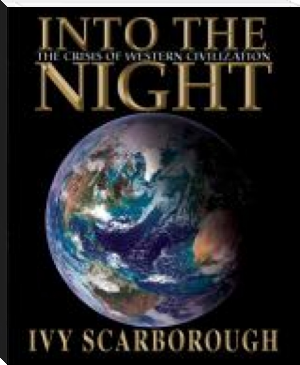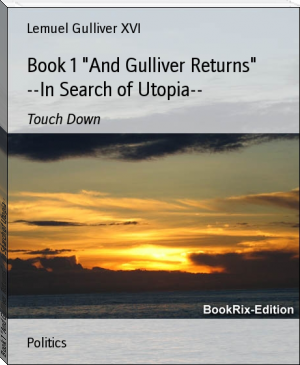Into The Night, Ivy Scarborough [i am malala young readers edition txt] 📗

- Author: Ivy Scarborough
Book online «Into The Night, Ivy Scarborough [i am malala young readers edition txt] 📗». Author Ivy Scarborough
Part I
In Part I our questions will include: What have the leading thinkers on the subject of civilizational decline and decay had to say about modern Western civilization? What characteristics and indicia of decline and decay recur in their writings and observations? What are the central features – the axes of human thought and action – which are the most determinative of a civilization’s health and longevity?
Since the true strength of any nation or civilization is in its soul, what the people believe and hold true determines their destiny. As character is destiny for an individual, so it is for nations and civilizations.
Therefore, a critical question for any civilization or nation is: are their values of any value? Do their beliefs stand the tests of reality and eternity? Emerson made one of life’s most important observations when he noted that “beneath each depth a greater depth lies”. This is our objective: to probe the greater depths of these great questions.
Part II
Part II of this work focuses on the key institutions and beliefs that form the superstructure of Western civilization. We will discern what they are and come to grips with their parallel decline and decay. We will see that the West’s destiny will be shaped neither by fate, science and technology, or Western man’s intellectual aptitudes, but will lie solely in the province of the human will and character.
We will see in this segment that Christianity forms the very superstructure of Western civilization – a powerful and all-encompassing influence which pervades not simply the religious, but every realm of Western human endeavor: science, technology, economics, government, law, philosophy, military strategy and training, education, and social relationships.
Christianity’s role as the great girders upon which an entire civilization was built means that its renunciation – in whole or in substantial part – will ultimately result in the collapse of the entire edifice.
Contrary to what secularists would blithely assume, the girders cannot be replaced, one by one, by the secularist philosophy and worldview, thereby gradually “reinforcing” the structure with what they regard as more sound supports. Were that attempted – and that process has been well underway for more than a century – all external appearances would, at least initially, remain unchanged. But at the first strong wind or geotectonic shift, visible cracks in the structure would begin. The physics of history dictate that the edifice must fall.
The wheel of history has made another near complete revolution. The fervency, nonconformity, and self-sacrifice of the Christian church of the 1st Century – which eventually made it the superstructure of the new and most powerful of all civilizations – have been dramatically dissipated in the geographic area of the West. With great but perhaps appropriately just irony the Western church has courted the culture and now faces rejection – nearly completely so in Europe and decidedly so in terms of influence in America.
The church’s assignation with the Western world’s power and wealth has brought it in a great circle – now closer to the catacombs than to the cathedral.
The great overarching Question which is rarely asked, and certainly never fully and deeply answered: Why, with all the advantages the Christian church enjoyed in 19th and 20th century Western civilization, is it now in this position? Was this inevitable? Was this decline beyond the church’s control?
I believe, and will strive to demonstrate, that the honest answer is no. The failure is the result of a decline and decay within the church itself which not only paralleled but nurtured the decline and decay of Western civilization as described in Part I. This decline and decay within the church is now so pervasive and insidious that most Western Christians – even the most sincere among them – don’t recognize many of its manifestations. Indeed, the polarities have in many ways been reversed: that which would have once been rightly perceived as secular and “worldly” has now been “baptized” as examples of spiritual “success”.
Part III
Part III elevates Western man’s character and spiritual state to what should be its proper status: the zenith of man’s hopes and priorities for change for the better and, by extension, hope for his civilization and his world. We will see what Western man can and must do if he has any prospect of avoiding the abyss history reserves for decaying civilizations.
The traditional metaphor for history is the most apt, of a great wheel rolling inexorably forward through time, but with a significant difference: Though the themes and the behavior of its actors relentlessly recur – just as the same point on a rolling wheel contacts the ground over and over with a languorous monotony – these do not reflect cycles of purposeless redundancy. They are manifestations of a sweeping purpose – a forward movement through the mountains, plains, and swamps of millennia of growth, learning, adversity, and suffering to a divine revelation.
Whether ours will soon be just one of many civilizations crushed under this mighty wheel of history will be determined by choices made by Western man. In the fullness of time, the words contained herein will prove either to be a prophetic obituary or the heralding of a great awakening and renewal for Western civilization.
Publication Date: 10-16-2010
All Rights Reserved





Comments (0)